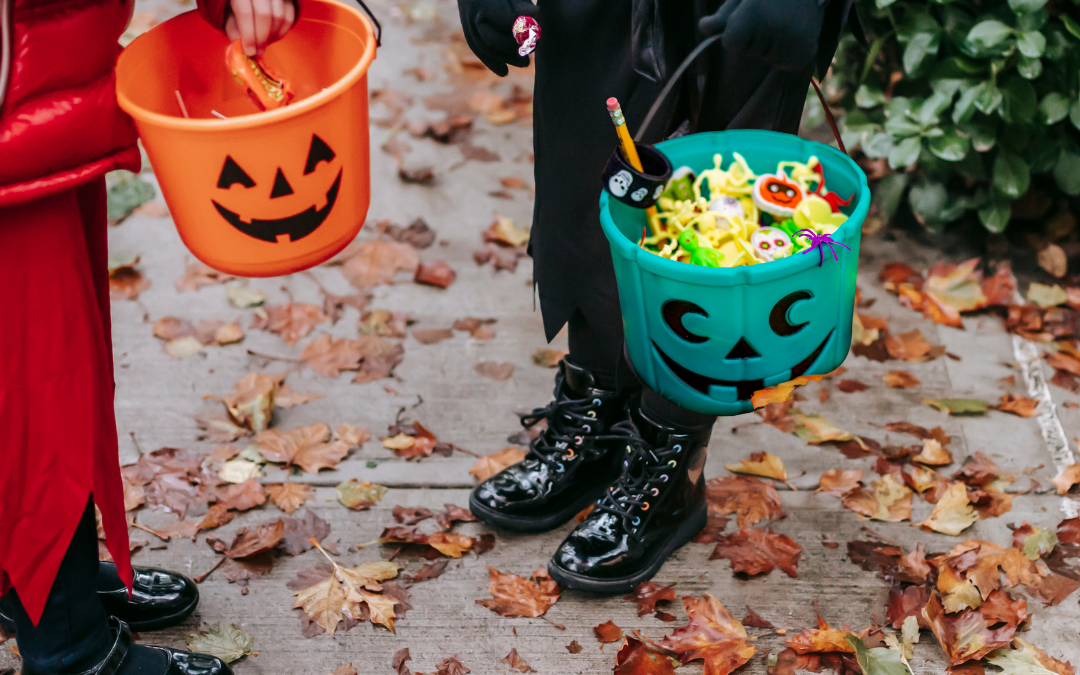On this Hallow’s Eve, whether your night has many frights and spooky lights in store or will be filled with the warm glow of Jack-o’-lanterns as you answer the door to your festive visitors, we combined tips from the CDC and Dana Zia, the Tillamook County Pioneer’s food writer, to help provide you with some tricks in your trick or treat tonight.
Treats:
Not all treats are created equal; there may be a considerable amount of sugar in the treats your goblins or ghosts (and even yourself) consume. Dana Zia shared with us that an estimated 2 billion dollars is spent on Halloween candy each year. For context she adds, “that is enough for 20,000 students to attend a decent college for 4 years, or to feed 303,030 kids in Ghana, Africa for a year!” Eating a nutritious meal, drinking plenty of water (bring water with you) and enjoying the candy in moderation is a way to offset the anticipated sugar load. It is also important to inspect the candy’s packaging before eating, and only eat factory-wrapped treats. If you have any doubt about the safety of a treat, throw it out.
Halloween can be extra tricky for trick-or-treaters with food allergies. Just as with inspecting the candy before eating, if you have an allergy, always read the label on the treat, and throw it out if the label is missing. If an epinephrine auto-injector is prescribed to you or your spooky trick or treater, it is a good idea to carry it with you. If you see “teal pumpkins” with a trick-or-treater, this is a good indication that that superhero or princess has a food allergy. The Teal Pumpkin project was started by Food Allergy Research and Education (FARE) to start a worldwide movement to make Halloween more inclusive and safer for all by providing non-food treats, such as stickers, school supplies, and small toys, to kids with allergies, who can be more easily identified by carrying “teal pumpkins.”
Tricks:
The CDC shares the frightening fact that children, on average, are 2x more likely to be hit by a car and killed on Halloween than on any other day of the year. It is important to be prepared with safety in mind and keep these tricks up your sleeve before going out on Hallow’s eve.
Make yourself more visible to traffic by adding reflective tape to costumes and candy bags and by carrying a flashlight (check the batteries before heading out!). Trick-or-treating is safer in a group, with at least one responsible adult. Stick to the sidewalks when possible, walk, do not run between houses, and stay on the far edge of the road on the side that is facing traffic if walking on the road cannot be avoided. ALWAYS look both ways before crossing the street at a crosswalk or intersection. It is a good idea for each member who is trick or treating to carry emergency contact information in case lost or separated from caretakers or group.
We wish you all safe and happy hauntings tonight. For more information on Halloween safety from the CDC please visit CDC.org and search for “Halloween safety.” For more wellness information, visit our website at https://tillamookcountywellness.org/ and follow Tillamook County Wellness on social media.
Resources: Dana Zia’s from 2016 (https://tillamookcountywellness.org/scary-things-food-halloween/) and CDC blog https://blogs.cdc.gov/publichealthmatters/2019/10/halloweentips/

